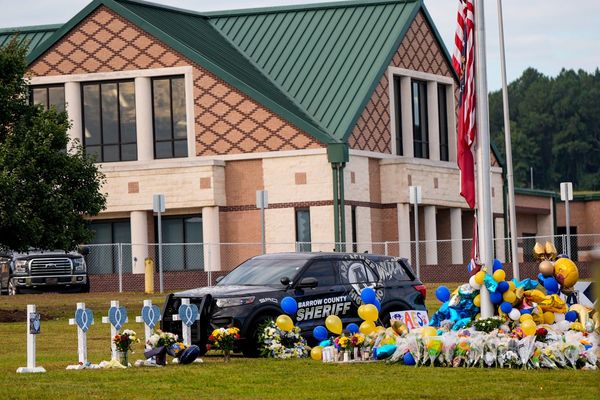Gov. Ron DeSantis and other Republican politicians are drawing an iron curtain of denial and ignorance across the history and continuing influence of racism in the United States.
There are disturbing signs that this revisionism has become policy at the Florida Supreme Court as well.
Over the years, it tried diligently to atone for having repeatedly barred a Black man from the state’s segregated law school in the 1950s. In 1989, it established a Racial and Ethnic Bias Study Commission whose reports inspired reforms across all three branches of government, including the appointment of many more minority judges.
There is now a requirement that all new judges attend a Fairness and Diversity Training Course, which a faculty of Florida jurists and academic consultants has taught with no outward controversy until now. Among other things, it focuses on unconscious biases, which affect people in various ways.
But last March, one or more attendees took offense and complained to Chief Justice Charles Canady, prompting a remarkable letter from him to 132 judges and magistrates who had taken the online course, which we obtained through a public records request. In that letter, Canady took offense too, and vowed to change the course.
“I reject the notion that our system of justice is systematically racist or systematically unjust in any way,” Canady wrote. “Our system certainly does not always work perfectly, but the assertion that it is systematically unjust does not fairly describe the work that Florida judges do day in and day out … And we can work to improve the system without condemning it as fundamentally flawed.”
Canady issued an order barring courses that insist on diversity in trainers, such as those offered by the American Bar Association, from counting toward lawyers’ required continuing education credits. We condemned that at the time, and now, Canady’s letter makes clear his reasoning.
Through the court’s press office, we submitted questions asking, among other things, who had complained to him and what specifically he had found objectionable in the course or its materials.
This was his emailed reply, in full:
“My letter addressing concerns about the March 2021 Fairness and Diversity Training Course clearly represents my views, then and now. The public administrative order issued by me reflects my position and fulfills my stated intent. My administrative order directs training of judicial officers must teach the necessity to apply the law faithfully and consistently to all who appear before them.”
But Canady’s assumption that Florida’s civil and criminal justice systems have been swept clean of systemic bias requires a great leap of faith, if not outright naivete.
“How does he know? The issue hasn’t been studied since circa 1990,” remarked Michael Radelet, a death penalty and racial bias expert who taught at the University of Florida for 22 years before leaving for the University of Colorado at Boulder.
“Chief Justice Canady’s pronouncement appears more informed by wishful thinking than by either history or evidence,” says Deborah Wagner, a lawyer, now retired, who was executive director of the court’s widely praised Racial and Ethnic Bias Study Commission three decades ago.
Florida prison statistics bear that out.
Blacks are just under 17% of the total Florida population but more than 47% of prison inmates, according to Department of Corrections data for the fiscal year that ended June 30, 2021.
They accounted for roughly 40% of new prison admissions and 42% of releases. Figures from the previous year showed a higher proportion of Blacks than whites under probation and other forms of community supervision as well.
Some 61% of prisoners sentenced for first degree murder (and ineligible for parole) were Black compared to only 27% who were white. But among those sentenced for manslaughter, the least severe homicide, 50% were white and only 30% Black.
On their face, such numbers suggest a system that treats Blacks more severely. The unanswered question is why. But it could be answered if the court or the Legislature cared to invest in serious research. Their indifference is a disgrace; they have known about the disparities for years.
“Despite progress,” Wagner wrote to us, “Florida’s bench remains far less representative than equity demands. And while no in-depth investigation on the scale of the Racial Bias Commission has been undertaken since 1990, evidence continues to mount that institutional and implicit bias still underlie why Black defendants are treated more harshly at every stage — from profiled stops, use of force and disparate arrests by law enforcement, to charging, jury-selection and plea-bargaining by prosecutors, and on to bail and sentencing decisions by judges.”
Some of those factors, particularly police discretion, are beyond the immediate reach of the Supreme Court, but not from its influence and example.
All of them are susceptible to decisions the Legislature might make.
Every responsible American wants justice to be color-blind. But to insist that’s already the case is to be blind to reality.
____
The Sun Sentinel Editorial Board consists of Editorial Page Editor Steve Bousquet, Deputy Editorial Page Editor Dan Sweeney, and Editor-in-Chief Julie Anderson. Editorials are the opinion of the Board and written by one of its members or a designee. To contact us, email at letters@sun-sentinel.com.







